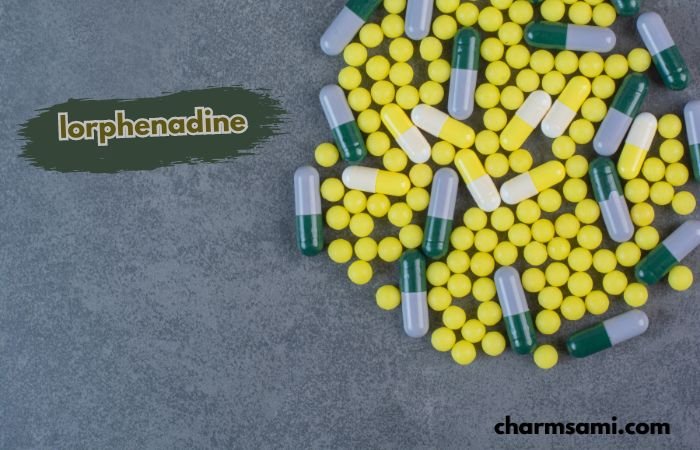
Lorphenadine is a popular antihistamine used to treat a variety of allergic conditions. It is widely known for its effectiveness in alleviating symptoms such as sneezing, itching, watery eyes, and runny nose. If you suffer from seasonal allergies or other allergic reactions, you might have already encountered this medication.
Brief History and Development of Lorphenadine
Developed in the late 20th century, Lorphenadine emerged as a significant advancement in allergy medication. It was formulated to provide relief without causing the drowsiness associated with older antihistamines. Since its introduction, it has become a staple in both prescription and over-the-counter allergy treatments.
Medical Uses of Lorphenadine
Primary Uses
Lorphenadine is primarily used to treat symptoms associated with allergic rhinitis and chronic urticaria (hives). It’s your go-to when you need to keep those pesky allergy symptoms at bay, allowing you to go about your day without constant irritation.
Secondary Uses
In addition to its primary uses, Lorphenadine can also be effective in treating other allergic conditions. These may include skin rashes and reactions to insect bites or stings. It’s quite the versatile medication, often recommended by doctors for a range of allergic responses.
How Lorphenadine Works
Mechanism of Action
Lorphenadine works by blocking histamine, a substance in the body that causes allergic symptoms. When you take Lorphenadine, it prevents histamine from binding to its receptors, thereby reducing symptoms like itching, swelling, and mucus production. Think of it as a shield that protects your body from the overzealous attacks of allergens.
Interaction with Other Medications
Lorphenadine can interact with other medications, which might alter its effectiveness or increase the risk of side effects. Always consult your healthcare provider before combining it with other drugs, especially if you’re on medications for chronic conditions.
Dosage and Administration
Recommended Dosage: The typical dosage for adults and children over 12 years is 10 mg once daily. However, always follow the specific instructions provided by your doctor or the packaging of the medication.
Administration Guidelines: Lorphenadine can be taken with or without food. Swallow the tablet whole with a glass of water. For liquid forms, use a proper measuring device to ensure you’re taking the correct dose.
Benefits of Lorphenadine
Effective Symptom Relief
One of the main benefits of Lorphenadine is its ability to provide quick and effective relief from allergy symptoms. It starts working within an hour, allowing you to breathe easier and feel more comfortable.
Long-term Benefits
For those with chronic conditions, Lorphenadine offers long-term benefits by controlling symptoms over time without the need for more sedative antihistamines. This makes it a preferred choice for many people dealing with persistent allergies.
Potential Side Effects
Common Side Effects: Common side effects of Lorphenadine include headache, dry mouth, and mild drowsiness. These effects are generally mild and tend to decrease as your body adjusts to the medication.
Rare but Serious Side Effects: Although rare, some people may experience serious side effects such as severe allergic reactions, dizziness, and irregular heartbeat. If you notice any unusual symptoms, seek medical attention immediately.
Precautions and Warnings
Who Should Avoid Lorphenadine?
Lorphenadine is not suitable for everyone. Individuals with severe liver or kidney problems, pregnant or breastfeeding women, and those allergic to its components should avoid it. Always consult your healthcare provider to determine if Lorphenadine is right for you.
Important Safety Information
Never exceed the recommended dose of Lorphenadine, as doing so can increase the risk of side effects. Avoid alcohol while taking this medication, as it can enhance drowsiness and other side effects.
Interactions with Other Medications
Drug-Drug Interactions: Lorphenadine may interact with other antihistamines, antidepressants, and certain antibiotics. These interactions can either reduce the effectiveness of Lorphenadine or amplify its side effects.
Food and Drink Interactions: While Lorphenadine does not have significant food interactions, it is advisable to avoid alcohol. Combining the two can increase drowsiness and other side effects, affecting your ability to function normally.
Lorphenadine in Special Populations
- Use in Children: For children aged 2 to 12 years, the dosage and form of Lorphenadine may vary. It’s crucial to follow pediatrician recommendations to ensure safe and effective treatment.
- Use in Elderly: Elderly patients may be more sensitive to the effects of Lorphenadine. A lower dose may be required to prevent potential side effects.
- Use in Pregnant and Breastfeeding Women: Pregnant and breastfeeding women should use Lorphenadine only if clearly needed and prescribed by a healthcare provider. The safety of Lorphenadine in these populations has not been fully established.
Overdose and What to Do
Symptoms of Overdose
Symptoms of Lorphenadine overdose may include severe drowsiness, fast heartbeat, and headache. In severe cases, it can lead to loss of consciousness.
Immediate Actions and Treatment
If you suspect an overdose, seek emergency medical attention immediately. Provide the medical team with information about the amount taken and when it was ingested.
Comparing Lorphenadine to Other Antihistamines
- Lorphenadine vs. Cetirizine: Both Lorphenadine and Cetirizine are effective antihistamines, but Lorphenadine tends to cause less drowsiness. Cetirizine might be more effective for severe allergies but may cause more sedation.
- Lorphenadine vs. Loratadine: Lorphenadine and Loratadine are quite similar, with both providing effective relief with minimal drowsiness. The choice between them often comes down to personal preference and specific response to the medication.
Conclusion
Lorphenadine stands out as a highly effective antihistamine, offering significant relief from allergy symptoms with minimal side effects. Its versatility and safety profile make it a popular choice for many. Always consult with your healthcare provider to determine if Lorphenadine is the best option for your needs.
If you gained new insights from this article, explore our blog, Gimkit, for more enlightening content.